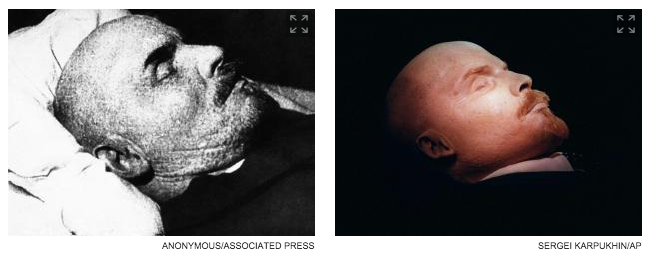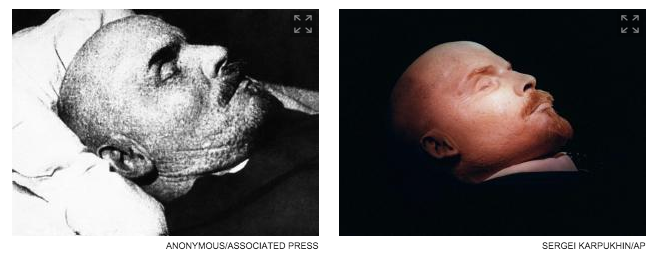Why Lenin’s Dead Body Gets Better with Age

When Vladimir Ilyich Ulyanov, better known as Vladimir Lenin, died in 1924, Winston Churchill summed up his life aptly: “[The] worst misfortune [of the Russian people] was his birth: their next worst his death.” Lenin’s death was a dangerous moment in history, Churchill aptly observed. While Lenin was a Marxist revolutionary with few qualms about violently quashing dissent, he was sunshine and cupcakes compared to those who would potentially succeed him. As a result, Lenin’s place in history is often seen as mixed.
But his reputation isn’t the only thing which has held up against time. So has his body. In fact, Lenin looks better and better as the years go by.
When Lenin died in January of 1924, his body lay in state for three days in Moscow so that nearly a million mourners could pay their last respects. As an unintended side effect, Lenin’s body was well-preserved — it’s cold in Moscow in January. Before the week was out, Lenin’s body was placed in a mausoleum and Josef Stalin realizing the potential here — he could deify Lenin while also exploring the science of preserving human remains — took action.
Stalin, per the New York Times, created a “Committee for the Immortalization of Lenin’s Memory” — basically, a team of embalmers dedicated to keeping Lenin’s body from turning back into ashes and dust. The team, now known colloquially as “the Lenin Lab,” has been successful, to say the least. Lenin’s body is still on display, and it looks great, especially for someone who has been dead for 90 years. On the occasion of Lenin’s body’s 145th birthday, Scientific American revisited the corpse’s preservation process:
The Russian methods focus on preserving the body’s physical form—its look, shape, weight, color, limb flexibility and suppleness—but not necessarily its original biological matter. In the process they have created a “quasibiological” science that differs from other embalming methods. “They have to substitute occasional parts of skin and flesh with plastics and other materials, so in terms of the original biological matter the body is less and less of what it used to be,” says Alexei Yurchak, professor of social anthropology at the University of California, Berkeley. “That makes it dramatically different from everything in the past, such as mummification, where the focus was on preserving the original matter while the form of the body changes,” he adds.
As a bonus, Lenin’s body keeps getting better with age. Over the years, per Scientific American, a lot of the former dictator’s body parts have been swapped out for, well, something other than genuine pieces of Lenin. He now has artificial eyelashes, replacement skin in some areas, a new nose, and fake skin fat which is designed to keep his body’s shape to look like himself. Below are two photos — one from just after his death, and the other more recent (via the New York Daily News). You’ll note that in the more recent photo — the one on the right — Lenin appears younger, healthier, and a bit plastic.

The process is an on-going one — Lenin’s body is still in the mausoleum and open to visitors. But if you want to check it out for yourself, you may want to plan ahead. In order to keep the body in good condition, the Lenin Lab re-embalms it every other year, requiring that the body be taken out of the display area for roughly six weeks during that process.
 Bonus Fact: Prisoners in the Soviet Union and other Soviet-controlled nations would often get tattoos featuring Lenin or Stalin. But they weren’t trying to curry favor with the wardens on the government. As the BBC notes, “some prisoners had portraits of Lenin and Stalin tattooed on their chest for ‘protection’, as it was commonly believed that the guards were forbidden to shoot at an image of their great leaders.”
Bonus Fact: Prisoners in the Soviet Union and other Soviet-controlled nations would often get tattoos featuring Lenin or Stalin. But they weren’t trying to curry favor with the wardens on the government. As the BBC notes, “some prisoners had portraits of Lenin and Stalin tattooed on their chest for ‘protection’, as it was commonly believed that the guards were forbidden to shoot at an image of their great leaders.”
From the Archives: A Mushroom Grows in Moscow: Lenin was not a mushroom.
Take the Quiz: Who said it: Vladimir Lenin or John Lennon?
Related: “Lenin’s Embalmers,” a book from 1999 by one of the son of one of the original embalmers and who took over for his father later on in life. 4.3 stars on 11 reviews.
